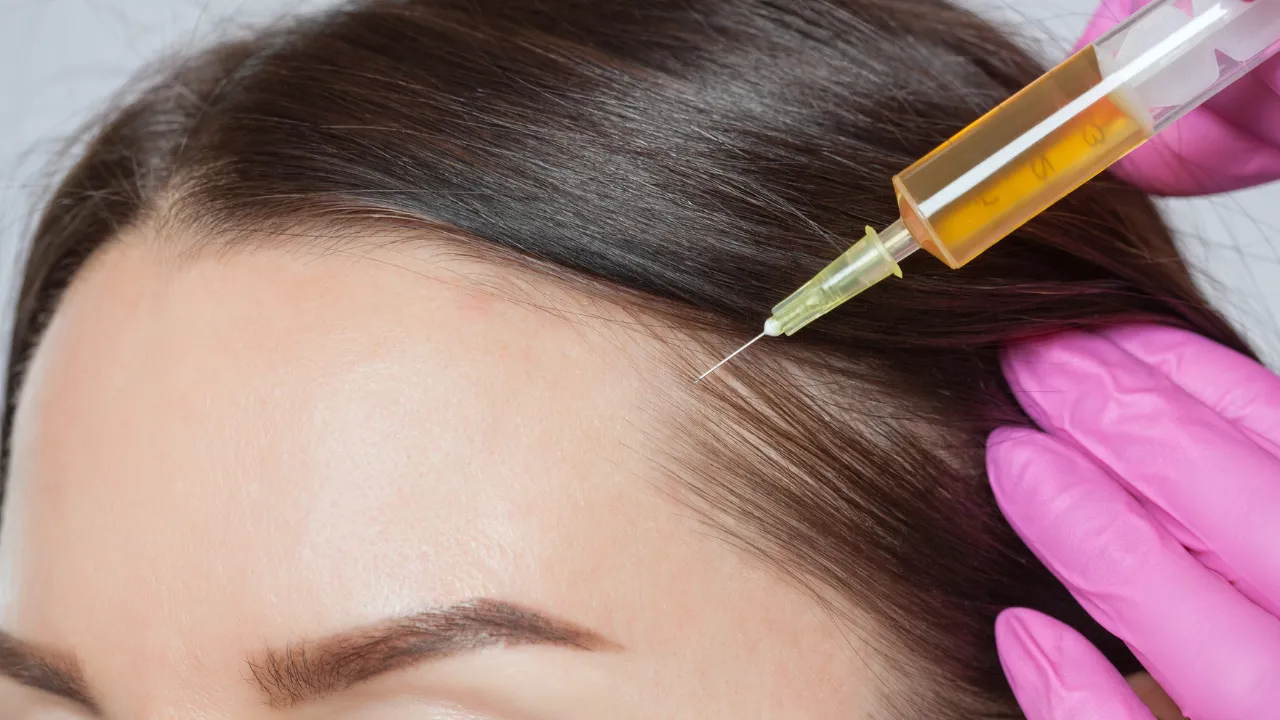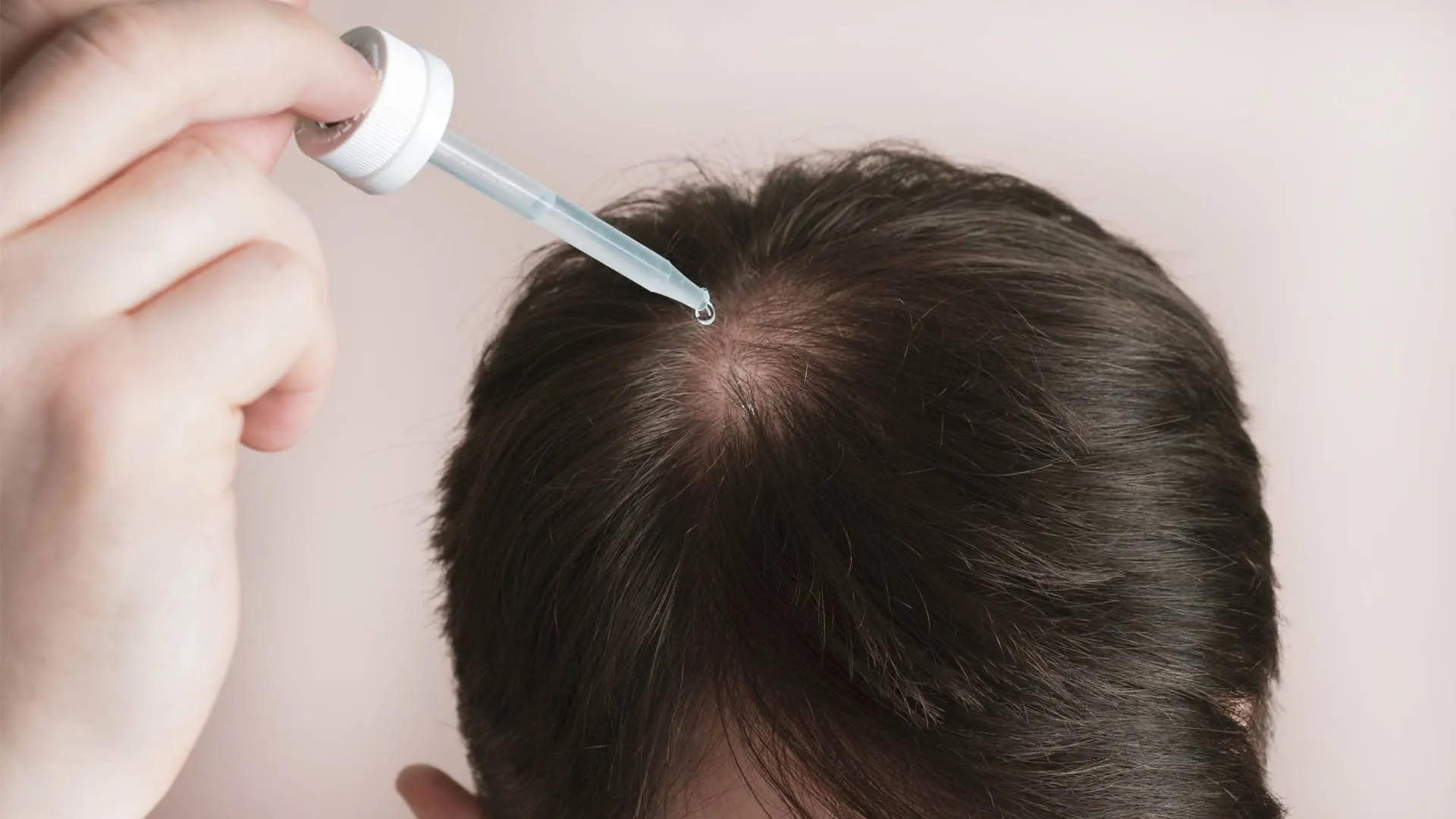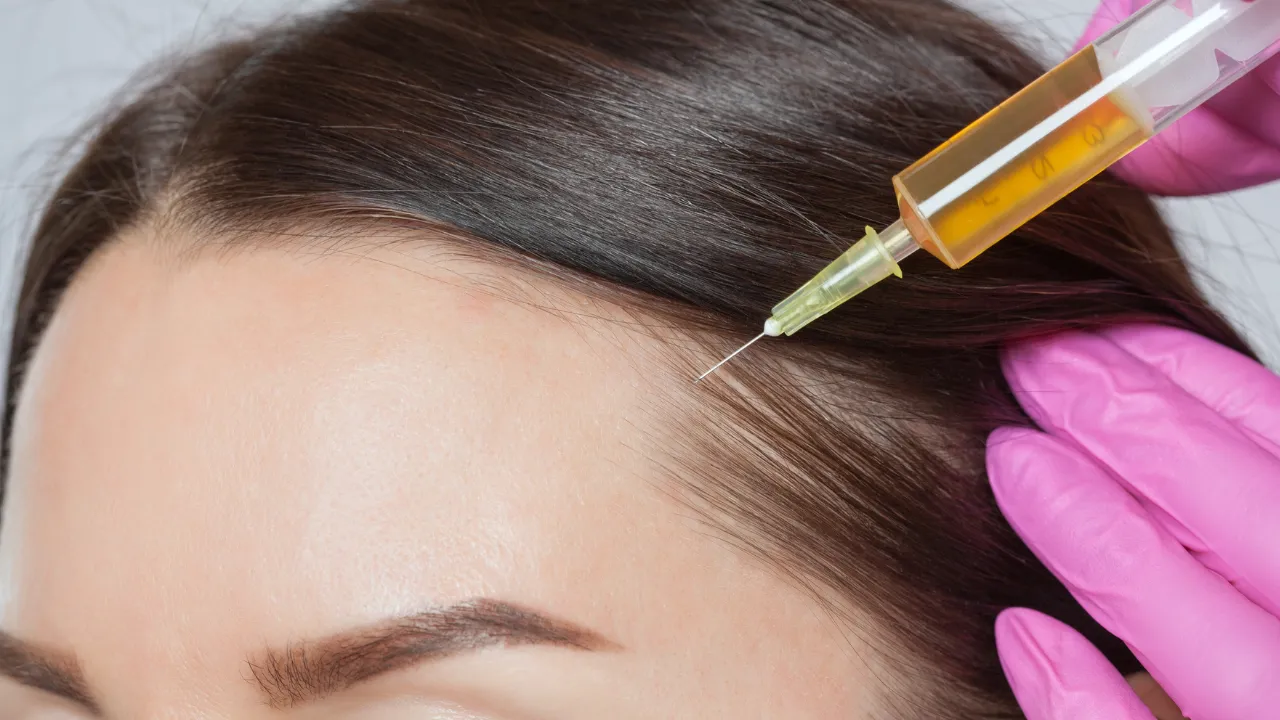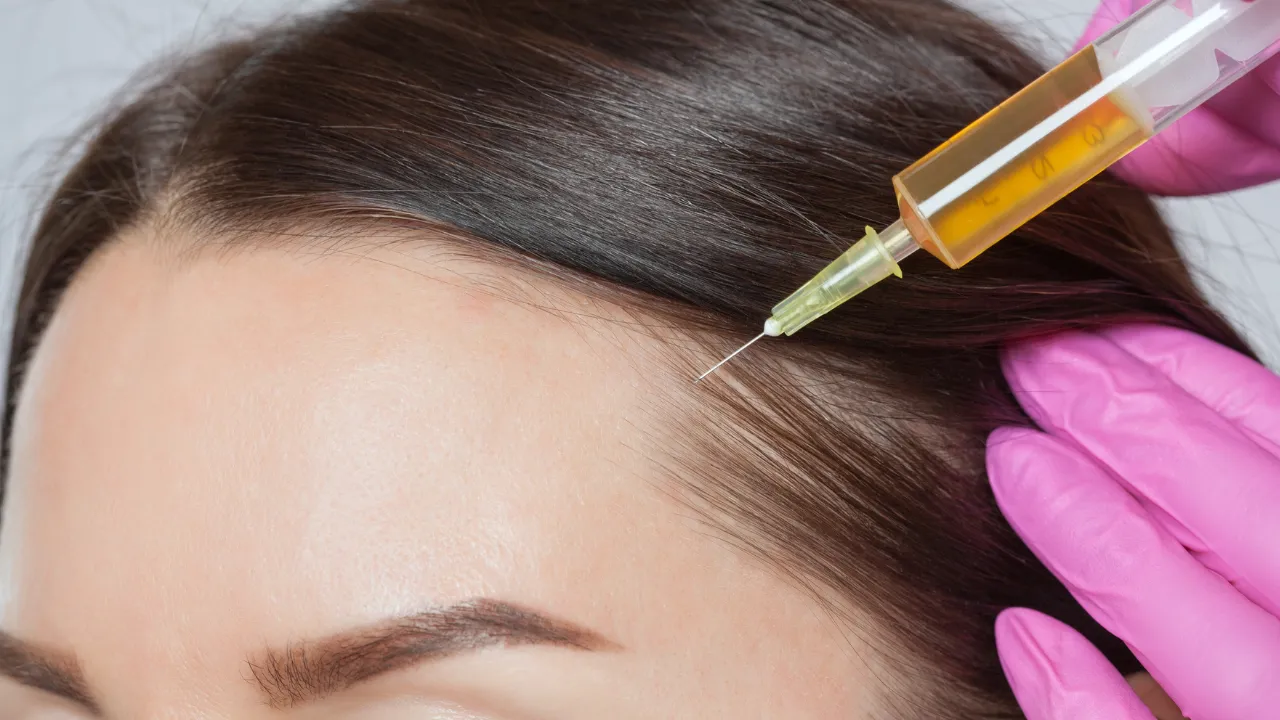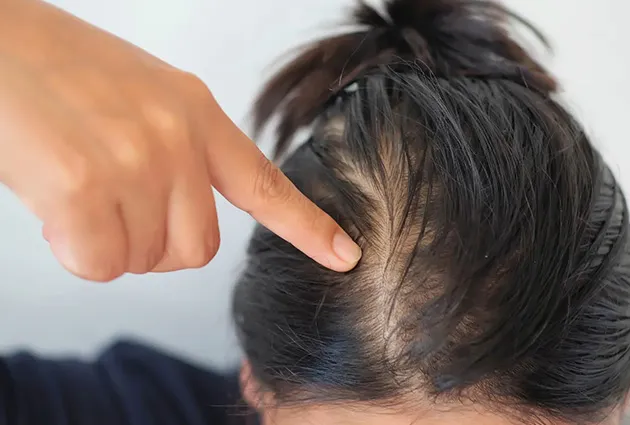Table of Contents
ToggleWhat Is Post-Finasteride Syndrome (PFS)?
Post-Finasteride Syndrome (PFS) is a group of lasting symptoms. Some people may have these symptoms after stopping finasteride for at least 3 months. Doctors commonly prescribe finasteride, a 5α-reductase inhibitor, for androgenic alopecia (male-pattern hair loss) and benign prostate conditions.
Finasteride helps with these concerns, but some users may have lasting side effects. These can include sexual problems, brain fog, and mental health symptoms like thoughts of suicide. Understanding PFS is vital for advancing research and improving outcomes for affected individuals.
Causes and Risk Factors of PFS
How Finasteride Works and Its Side Effects
Finasteride works by inhibiting the conversion of testosterone into dihydrotestosterone (DHT), a hormone linked to both androgenetic alopecia and prostate growth. This treatment can help with hair loss and prostate problems.
However, it can disrupt hormonal balance. This disruption may lead to side effects from finasteride. These side effects include sexual dysfunction, fatigue, and mood changes.
Why PFS Occurs in Some Patients
The exact mechanisms behind PFS remain unclear. Researchers believe that long-term use of finasteride may change levels of neuroactive steroids. These steroids are important for how the brain and bodywork.
Other possible factors include genetics, how sensitive a person is to 5α-reductase inhibitors, and the nocebo effect. The nocebo effect happens when negative expectations about the medication make symptoms worse.
PFS in Women: Unique Considerations
Post-finasteride syndrome is rare. However, researchers have reported it in women who use finasteride for other treatments, like androgenic alopecia. Hormonal changes from the drug can cause physical and mental health issues. These include irregular periods, sexual problems, and mood swings.
Is post-finasteride syndrome real, and who is most at risk of developing it?
Post-Finasteride Syndrome (PFS) remains a debated topic for several reasons:
- Reports of PFS only began emerging 15 years after finasteride was approved by the FDA.
- Many PFS cases rely on self-reports rather than formal diagnoses from healthcare providers.
- To date, clinical studies have not conclusively linked finasteride to persistent sexual side effects.
- Some evidence shows that the “nocebo effect” can affect PFS. It may raise the chances of bad outcomes when people expect them. A study found that 44% of participants reported sexual side effects. This happened after researchers told them these effects might occur. In contrast, only 15% of those who did not receive this information reported side effects.
Despite the controversy, PFS is a genuine condition for those affected. Researchers and advocacy groups are working to get the medical community to recognize PFS. They want to make sure people know the risks before starting finasteride.
Symptoms of Post-Finasteride Syndrome
Sexual Health Symptoms
Sexual dysfunction is one of the most commonly reported symptoms of PFS, including:
- Erectile dysfunction
- Loss of libido or reduced sensitivity
- Difficulty achieving or maintaining arousal
These sexual side effects can persist even after stopping finasteride, severely impacting quality of life.
Psychological and Neurological Effects
PFS often involves psychological and neurological symptoms, such as:
- Depression, anxiety, and suicidal ideation
- Cognitive impairments or “brain fog”
- Sleep disturbances and fatigue
These symptoms suggest a link between finasteride’s hormonal effects and disruptions in neuroactive steroid pathways.
Physical Health Issues Linked to PFS
Physical and mental health symptoms in PFS include chronic pain, muscle weakness, and weight changes. Some PFS patients report persistent fatigue, adding to the complexity of managing the condition.
PFS: How Many People Does It Affect?
The Post Finasteride Syndrome Foundation estimates that PFS affects a small percentage of users, though exact figures vary. Some research shows that about 1-2% of finasteride users may have lasting symptoms. However, underreporting makes it hard to know the exact numbers.
Diagnosing Post-Finasteride Syndrome
Clinical Criteria for Diagnosing PFS
Diagnosing post-finasteride syndrome PFS is challenging due to the absence of definitive tests. Doctors often rely on clinical evaluations and symptom histories to rule out other causes. Common diagnostic steps include:
- Assessing hormonal imbalances (e.g., DHT levels)
- Reviewing the patient’s history of finasteride treatment and side effects
- Evaluating physical, sexual, and psychological symptoms
Self-Assessment for PFS
If you suspect PFS, keep a record of your symptoms, noting when they began and their severity. Sharing this information with a healthcare provider can aid in diagnosis and treatment planning.
How Long Does PFS Last?
Is PFS Permanent or Reversible?
The duration of post-finasteride syndrome varies widely. While some individuals see gradual improvements over months or years, others report persistent symptoms. Researchers still study the question of whether post-finasteride syndrome is real. Some cases can be reversed, but others may need long-term care.
When Do Side Effects Subside After Stopping Finasteride?
For most users, common finasteride side effects resolve within a few weeks of stopping the medication. However, PFS patients may experience symptoms that persist long-term, highlighting the importance of individualized care and further research.
Treatment Options for Post-Finasteride Syndrome
Topical Treatments for PFS Symptoms
Topical alternatives like minoxidil can help treat hair loss without affecting systemic hormones. While these treatments don’t address PFS directly, they can reduce the stress associated with continued hair loss.
Medical Interventions and Therapies
Medical treatments for PFS focus on alleviating specific symptoms rather than curing the syndrome as a whole. Options include:
- Hormonal Therapies: Restoring testosterone or DHT balance.
- Antidepressants: Addressing psychological symptoms like depression and anxiety.
- Physical Therapy: Targeting chronic pain and muscle weakness.
Consulting a specialist is essential to create a tailored post-finasteride syndrome treatment plan.
Lifestyle Changes to Manage PFS
Lifestyle adjustments can complement medical interventions and help improve overall well-being:
- Balanced Diet: Supporting hormonal health with proper nutrition.
- Exercise: Reducing fatigue and improving physical health.
- Mindfulness and Counseling: Addressing the emotional toll of PFS through stress management and support groups.
Is PFS Real? Evidence and Research
Scientific Studies on PFS
Studies have documented persistent symptoms in a subset of finasteride users, supporting the reality of post-finasteride syndrome. These include clinical findings on altered neuroactive steroid levels and their role in mood, cognition, and physical health.
Insights from the Medical Community
The medical community remains divided on PFS. Some doctors see it as a real condition that needs more research. Others think that the nocebo effect or mental factors might make symptoms worse.
Ongoing Research Efforts
Researchers are investigating the long-term effects of 5α-reductase inhibitors and exploring new treatment approaches. Groups like the Post Finasteride Syndrome Foundation work to raise awareness. They also fund studies to understand and manage PFS better.
Final Thoughts on Post-Finasteride Syndrome
Dr. Kopelman emphasizes the importance of a patient-centered approach when addressing finasteride syndrome. For individuals experiencing post-finasteride symptoms, understanding the condition is the first step toward recovery.
You can manage PFS and improve your quality of life. You can achieve this through lifestyle changes, medical treatments, or ongoing support. There is hope for everyone. As research advances, experts like Dr. Kopelman remain committed to providing actionable solutions tailored to each patient’s needs.
For those dealing with hair thinning or similar concerns. Consider speaking with Dr. Kopelman. This father-son team has more than 40 years of experience in hair restoration.
They focus on personalized treatments for every client. Dr. Kopelman’s expertise can help you find the right solution tailored to your unique needs. Schedule a consultation today to explore your options and take the first step towards achieving your hair goals.












